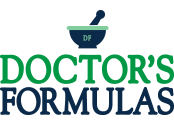Function of the Digestive System
Everything you need to know about
The Human Digestive System
The gastrointestinal system consists of a set of organs that all work together to carry out the absorption process, which is the basic function of this system.
Each part of it performs its own special function and can break down and digest the food but does not do the same with its structures.
Its functions and its integrity are protected by endogenous aggressive agents such as digestive enzymes, acids and bile. Furthermore, because it is "open" to the external environment, it must provide protection against various harmful substances and microorganisms that are swallowed with food.
There is a balance between aggressive agents and protective mechanisms to maintain the integrity of the mucosa. The defensive mechanisms are adjusted and adjusted so as to avoid injury or intrusion into the mucosa.
For peptic ulcer, for example, these protective mechanisms have been tampered with either by toxic substances in the lumen, e.g. non-steroidal anti-inflammatory drugs (NSAIDs), or by the interaction of Helicobacter pylori and its cytotoxic products with the mucosa.
The gastrointestinal system hosts a larger number of germs than the number of cells present in the human body, but without allowing these germs to take the reins, despite their rapid multiplication. It can also handle strong hydrochloric acid without stomach denaturation.
The mechanisms behind these amazing features are many, but a key factor is the absolute defensive line of the gastrointestinal tract, the mucus.
Mucus is a viscous sticky substance containing glycoproteins known as mucins, consisting of about 80% carbohydrates, mainly galactose and N-acetylglucosamine. Carbohydrate chains protect this molecule from pepsin.
Already in 1800, Glover, involved the mucus layer as the natural barrier to hydrochloric acid and bile. This idea was highlighted by Harley in the 1860s and led to an increased interest in mucus as a barrier to digestive enzymes in the mid-20th century. This concept of impermeability of the mucus and mucous membrane was proposed by Bernard in 1855, although at that time it could not be proven in a convincing way. These results, among other things, laid the foundation for Hollander's idea of a "self-generated two-component mucus barrier" (Hollander 1954).
This barrier includes an outer layer of viscous gel, "mucus" and an epithelial cell layer beneath it. The double character of this barrier was also suggested for the duodenum.
The duodenum, the mouth and the esophagus, as well as the skin, are protected by multiple tight layers and to a large extent by inactive squamous epithelium, which is rinsed with mucus by the salivary and other glands. Instead, the rest of the gastrointestinal tract has a single layer of very active cells.
The main protection of this vulnerable cellular formation is the mucus that covers these cells and the glycocalyx, which contains enzymes and the secretory agent of immunoglobulin A.
Mucus is a thick, slimy secretion that is necessary for many biological functions, such as lubrication, hydration and protection of the underlying epithelium.
The intestinal mucosa contains billions of germs, which are a permanent challenge to the integrity of the epithelial surface. However, conventional symbiotic flora that competes for nutritional and epithelial attachment sites with undesirable microbes, protects the underlying epithelium from penetration of pathogenic microbes.
Changes in mucus properties are likely to significantly affect the function of the mattress.
For example, a layer of intestinal mucus that is too thin, like inflammatory bowel diseases, will help bacteria reach the epithelial cells, which can cause inflammation due to the unregulated immune response in the intestinal cell.
The esophagus secretes exclusively mucus, which lubricates the esophagus, but also reduces the risk of esophageal damage from any sharp pieces of food. Mucus also protects the esophagus from gastric juices and enzymes if reabsorption of gastric contents occurs in the esophagus.
Esophageal defense is characterized by an interdependent complex of structural and functional elements designed in such a way as to provide adequate protection for the epithelium upon contact with harmful substances, particularly hydrochloric acid and pepsin. Failure to protect leads to epithelial destruction that progressively translates into symptoms (e.g. heartburn) and signs of gastroesophageal reflux.
The morphological integrity of the esophageal mucosa is defined by the balance between aggressive agents and protective mechanisms.
Aggressive agents are dominated by hydrochloric acid and pepsin, while protective mechanisms, also called the esophageal barrier of the mucosa, are expressed by neutralizing the acidic and proteolytic action of pepsin from buffers, mucins, mucus and accompanied by growth factors peptide factors, through a top-transfer complex, ion transfer, and with sufficient blood flow to the mucosa.
The esophageal barrier of the mucosa operates in pre-epithelial, epithelial and post-epithelial compartments and participates in the prevention of epithelial lesions and healing of epithelial cell necrosis.
The components of the esophageal pre-epithelial barrier produce a viscoelastic mucus layer and trap bicarbonate ions, providing an alkaline microenvironment that remains the vanguard to protect the mucosa as the aggressive agents always act on the esophagus epithelium.
The gastric mucosa is constantly exposed to many harmful agents and substances.
But how does the gastric mucosa maintain structural integrity and resist automatic digestion by substances such as hydrochloric acid and pepsin that have been troubled by clinical doctors and researchers for more than 200 years?
Gastric epithelium should also resist damage from exogenous agents, including Helicobacter pylori, but also harmful agents such as ethanol and non-steroidal anti-inflammatory drugs (NSAIDs).
The surface of the stomach is covered by a layer of viscoelastic gel, mucus, acting as a protective barrier against the harsh environment of the lumen. The structural characteristics of this barrier are key indicators of its physiological function and changes in its composition in gastrointestinal pathologies have been identified.
Although the precise mechanisms of the mucosal defense system are unknown, it includes natural defensive factors and one of them is the metabolism of mucus.
The gastroprotective function of mucus covers the surface of the mucous membrane of the stomach.
Mucus is produced by specific cells, secreted and covers extensively the mucosal surface layer forming mucus gel layers.
Mucus secretion is directly adapted to both pathological conditions and physiological changes in stomach function. In addition, the mucus present in the stomach exhibits various actions, such as maintaining the lubrication of the mucosal surface, mixing with ingested foods, assisting digestion, and protecting the epithelium from irritation by forming a layer of thick gel.
The gastric mucosa acts to maintain homeostasis between its physiological mechanism for endogenous irritants such as gastric acid and pepsin as well as exogenous irritants such as NSAIDs, stress and alcohol.
During mucosal protection, various factors are involved, such as bicarbonate ions, mucus blood flow, and cell cycle processes other than mucus. In recent years, roles that function as indirect agents, such as prostaglandins and superoxide dismutase, have also been elucidated. These factors interact with one another.
Mucosal injury results from the imbalance between aggressive agents and protective mechanisms.
Mucin, the major constituent of mucus, is biosynthesized by cells that produce mucus and is secreted by them.
Mucosal cells are classified primarily as mucosal cells, surface mucus production or gastric gland cells, and the corresponding mucins differ in their peptide sequences and in the chemical composition of their carbohydrate moieties.
Mucin kernel peptides from mucus surface cells and gastric stomach cells are designated MUC5AC and MUC6, respectively. The mucins from these two cell types have distinct roles in the gastric mucosa physiology.
Helicobacter pylori infection is associated with the development of gastritis, ulcer, and possibly gastric malignancies.
It first penetrates the gastric layer of the mucosa and then binds to specific targets of mucus or epithelial cells. Helicobacter pylori infection results in a reversible change in mucin glycosylation, which favors bacterial adhesion.
The ammonia-producing urease activity increases the pH which destabilizes the mucosal layer. This action, however, is not enough to cause a collapsing of the mucosal barrier and along with the bacterial binding to the mucus favors the survival of Helicobacter in the mucosal layer.
The attachment of H. Pylori to gastric epithelial cells leads to more severe damage.
The gastric mucus barrier consisting of a layer of viscous mucus is critical for the defense of the gastric mucosa. In bowel conditions, such as ulcerative colitis or Crohn's disease, which are multifactorial disorders with vague etiology, the mucosal layer in ulcerative colitis for example is disturbed and a thinner mucosal layer is present compared to that which overlaps the intestinal mucosa in normal condition or Crohn's disease.
The reduction in mucus thickness has been associated with depletion of the calicoid cells in the affected colon, thereby reducing the mucin production process.
The mucus protective system varies considerably along the digestive tract.
In the mouth, the salivary glands produce MUC5B and MUC7, which lubricate the food to pass through the esophagus.
The stomach has a system of two mucous membranes producing mucus, consisting of an internal, attached mucus and an outer, unattached, relaxed mucus layer and both consist of the mucin MUC5AC produced by the superficial epithelium.
The glands in the stomach and duodenum secrete the mucin-forming mucin MUC6.
The small intestine, unlike the stomach and the large intestine, has only one type of surface mucus, consisting of MUC2. This mucus is not attached and is easy to remove.
The intestine has a system of two kinds of mucus, an inner dense and attached mucus layer and an outer, loose and unapproved mucus layer, made by MUC2. The same mucin, MUC2, behaves differently in the small intestine and the large intestine.
The gastrointestinal tract is covered by mucus, which has different properties in the stomach, small intestine and large intestine.
The large, glycosylated MUC2 and MUC5AC mucin-forming mucins are the main constituents of mucus in the intestine and stomach, respectively. In the small intestine, the mucus limits the number of bacteria that can reach the epithelium and Peyer's plates. In the large intestine, the inner mucus layer separates the flora from the host epithelium.
Mucosal surface protection and anti-inflammatory activity are two important factors in supporting gastrointestinal health.
The PEPTOCARE formula contains MUCOSAVE® FG which is a composition containing the opuntia ficus indica extract from the frangipani in combination with olive leaf extract biophenols. The opuntia ficus indica polysaccharides have a strong mucus-binding ability and the biophenols from the olive leaf extract provide a soothing effect.
In vitro experimental studies in mucosal cell lines have shown that MUCOSAVE® FG has a strong mucoadhesive effect (up to 60% on the cell surface), which is higher than other bioadhesive polymers such as hyaluronic acid and alginate (30% and 5% respectively).
This is due to competition in the binding of lectins and polymers tested on glycoproteins of the mucosal surface.
The formula PEPTOCARE also contains vitamin B2 (riboflavin) and calcium. Vitamin B2 helps maintain normal mucosal status, and calcium contributes to the normal functioning of digestive enzymes.

